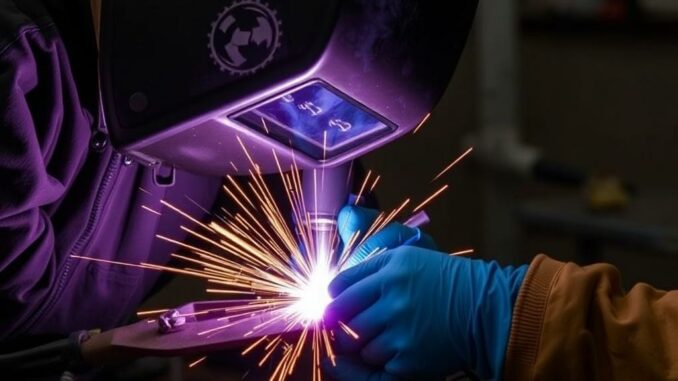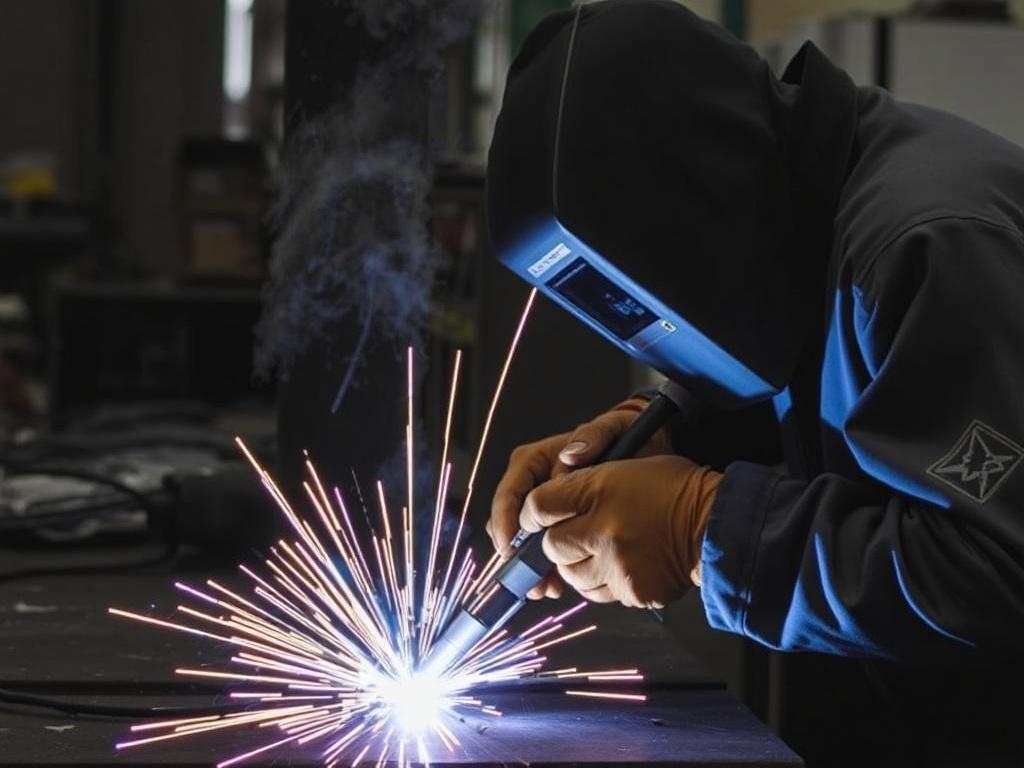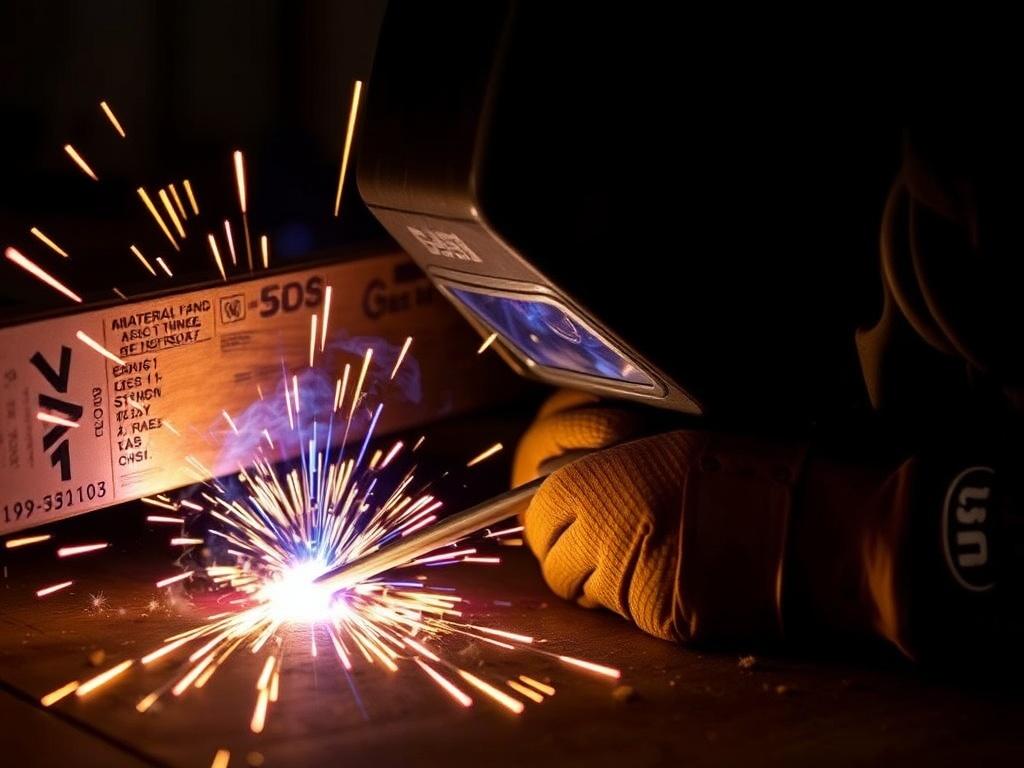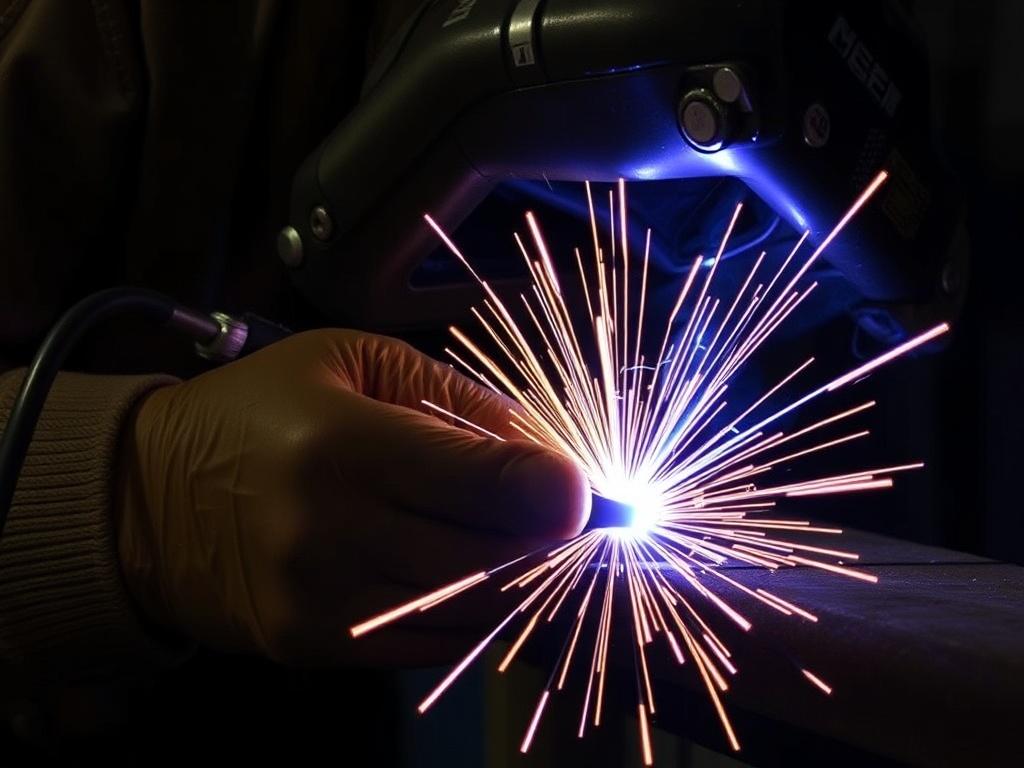
When it comes to welding methods that are dependable, simple, and versatile enough to handle rough environments, stick welding, also known as Shielded Metal Arc Welding (SMAW), stands out as a true champion. Whether you’re working outdoors in the pouring rain, tackling heavy construction tasks, or performing maintenance on thick steel structures, stick welding delivers reliable, high-quality welds under challenging conditions that would stump many other welding techniques.
In this comprehensive article, we’ll explore everything you need to know about stick welding. From its history and underlying principles to practical applications, equipment essentials, electrode types, and tips for achieving excellent welds, you’ll gain deep insights into why stick welding remains a go-to choice for professionals and hobbyists alike in tough conditions.
What is Stick Welding (SMAW)?
Stick welding, formally called Shielded Metal Arc Welding (SMAW), is one of the oldest and most widely used welding processes in the world. It involves using a consumable electrode—essentially a metal rod coated with flux—that conducts current and melts, depositing molten metal to join two workpieces together. The flux coating vaporizes during welding to create protective shielding gas and slag that shield the molten weld pool from contamination.
One of the key reasons stick welding has endured through decades of advancement in welding technology is its unmatched simplicity and durability. Unlike MIG or TIG welding, which require specialized shielding gas setups and sometimes delicate equipment, stick welding’s all-in-one electrodes provide both filler metal and shielding. This allows welders to work in almost any environment—from sun-drenched open construction sites to damp, windy conditions—that would scatter compressed gas shielding used in other processes.
The Basic Principles of SMAW
The process starts by striking an electric arc between the electrode and the metal workpiece. The intense heat generated by the arc—often reaching temperatures of around 6,500 °F (3,600 °C)—melts the electrode tip and the surface of the workpieces, forming a molten pool. As the weld pool cools, it solidifies and creates a strong metallic joint joining the workpieces.
The flux coating plays a critical role by decomposing into gases that shield the molten metal from oxygen and nitrogen in the air. Exposure to these elements can cause weld defects such as porosity or brittleness. Additionally, the flux forms a layer of slag on top of the weld which protects it as it cools and also helps shape the weld bead. After welding, the slag is chipped away to reveal a solid weld.
The History and Evolution of Stick Welding

Stick welding traces its origins back to the early 20th century when innovators sought better methods to join metal parts. Prior to SMAW, welding was considered a laborious, unreliable art, limited mostly to forge welding and gas welding (also called oxy-acetylene welding). The invention of the coated electrode drastically changed the game.
In the 1900s, Russian and Swedish inventors developed coated electrodes that laid the foundation for modern stick welding. These electrodes allowed welders to create an arc with better stability and weld quality. By the 1930s, SMAW became more widespread particularly due to its adoption by the U.S. Navy during World War II, which helped demonstrate its robustness and applicability in tough shipbuilding and repair scenarios.
Since then, the SMAW process has undergone incremental improvements, including enhanced electrode coatings and power sources, but the core technique remains incredibly consistent. Even with the rise of advanced processes like MIG and TIG, stick welding continues to be indispensable in fields requiring mobility and ruggedness.
Why Stick Welding is Ideal for Tough Conditions
What makes stick welding so trusted in harsh environments? Several factors contribute to its reputation as a reliable method for enduring tough conditions:
- Portability and simplicity: SMAW equipment is typically compact and easy to transport. You don’t need tanks of shielding gas, which means fewer logistical challenges in remote or outdoor sites.
- Tolerance to contaminants: The flux coating provides excellent protection against dirt, rust, and moisture on the metal surface, allowing successful welding even when surface preparation is minimal.
- Excellent performance on thick metals: Stick welding excels at joining heavy steel sections, producing deep penetration and strong bonds.
- Ability to weld in windy or damp environments: The shielding provided by the flux coating makes SMAW less sensitive to wind or rain, unlike gas shielded processes that lose shielding gas easily.
- Versatility: Diverse electrode types support different metals, positions, and welding requirements.
All these qualities translate into a process trusted by construction crews, shipyards, pipeline welders, and repair technicians working in the field every day.
Essential Equipment for Stick Welding

Before diving into stick welding, it’s important to understand the core equipment components you’ll need to perform SMAW effectively:
| Equipment | Description | Role in SMAW |
|---|---|---|
| Welding Power Source | Usually a portable inverter or transformer-based unit | Provides the controlled electrical current (AC or DC) to create and maintain the arc |
| Electrodes (Welding Rods) | Metal rods coated with flux, consumable during welding | Conduct electricity, act as filler metal, and supply shielding flux |
| Electrode Holder | Clamp that securely holds the electrode and connects to the power source | Allows welder to strike and manipulate the arc safely |
| Ground Clamp (Work Clamp) | Clamp connected to the workpiece to complete the electrical circuit | Ensures electrical flow through the metal for arc welding |
| Protective Gear | Helmet (often auto-darkening), gloves, protective clothing | Protects welder from UV radiation, heat, slag, and sparks |
| Chipping Hammer & Brush | Tools for slag removal and cleaning weld beads | Essential for finishing and inspecting weld quality |
The beauty of SMAW is that this equipment is relatively straightforward and durable, unlike some other welding setups that rely on fragile or heavy apparatuses.
Understanding Welding Electrodes for Stick Welding

One of the most important aspects of stick welding lies in selecting the right electrode. These welding rods come in many types, each designed for specific applications and materials. The electrode choice greatly impacts the weld quality, penetration, appearance, and mechanical properties.
How Electrode Coatings Work
The flux coating on electrodes contains ingredients like cellulose, rutile, calcium, and iron powder. These components serve various functions such as producing protective shielding gas, stabilizing the arc, improving slag detachability, and influencing the arc’s heat and fluidity.
Different electrodes combine these materials in unique ways to optimize weld characteristics for general use, root passes, or particular metals. Let’s look at some popular electrode categories.
Common Electrode Types Explained
| Electrode Type | AWS Classification | Primary Uses | Key Features |
|---|---|---|---|
| 6010 | Cellulosic | Deep penetration, pipeline, vertical down welding | Fast-freeze slag, aggressive arc, ideal for dirty or rusty metals |
| 6011 | Cellulosic with titania | General purpose, similar to 6010 but can run on AC or DC | Good penetration, smooth arc, suitable for outdoor or farm use |
| 6013 | Rutile | Light to medium penetration, sheet metal, clean surfaces | Smooth arc, easy slag removal, good appearance |
| 7018 | Low-hydrogen | Structural steel, critical welds, pressure vessels | Strong, ductile welds, low spatter, requires proper storage |
Different electrodes allow stick welding to adapt to diverse situations, from quick farm repairs with 6011 rods to demanding construction welds with 7018 rods.
Step-by-Step Process for Stick Welding
If you’re new to stick welding or want to refine your technique, understanding the fundamental steps ensures safety and weld quality.
- Prepare the Workpiece: Clean the metal surfaces as much as possible. Remove rust, paint, oils, and dirt with a wire brush or grinder for better results.
- Set Up the Equipment: Connect the ground clamp to the workpiece. Attach the electrode holder to the welding power source. Select the right electrode type and length.
- Safety First: Put on welding gloves, helmet, protective clothing, and ensure proper ventilation.
- Strike the Arc: Hold the electrode close to the workpiece and drag or scratch it like a match to initiate the arc.
- Maintain the Arc Length: Keep the electrode about 1/8 to 3/16 inch from the work surface. Too long an arc causes spatter; too short may stick.
- Weld with Proper Technique: Use steady hand movements; weave or move straight depending on the joint type and electrode.
- Chip Off Slag: After each pass, once cooled, use a chipping hammer and wire brush to remove slag.
- Inspect and Repeat: Check weld bead quality. Re-weld if necessary or perform additional passes.
Advantages of Stick Welding
What keeps stick welding relevant despite advances in technology? Consider these major advantages:
- Cost-effectiveness: Basic equipment and inexpensive electrodes make SMAW accessible.
- Robustness: Durable, reliable in dirt, moisture, wind, or adverse weather conditions.
- Ease of set-up: No gas tanks or regulators needed; simpler for beginners and fieldwork.
- Versatility: Can weld various metals, thicknesses, and positions.
- Deep penetration: Produces strong structural welds ideal for heavy fabrication.
Common Challenges and How to Overcome Them
While stick welding is straightforward, it comes with some learning curves and challenges. Many beginners struggle with slag inclusion, porosity, or arc stability. Here’s how to address common pitfalls:
| Challenge | Possible Cause | Solution |
|---|---|---|
| Difficulty striking or maintaining arc | Incorrect arc length, electrode angle, or worn electrode | Practice striking technique, maintain correct arc length, replace electrode if needed |
| Slag inclusion in weld | Insufficient slag removal between passes or poor electrode angle | Chip slag thoroughly, adjust electrode angle to ~10-15° from vertical |
| Porosity or pinholes | Contaminants on metal, damp electrodes or affect flux coating | Clean workpiece well, dry electrodes properly before use |
| Cracking | High welding speed, improper preheat, or wrong electrode choice | Slow welding pace, preheat thick metals, use low-hydrogen electrodes |
Tips for Improving Your Stick Welding Results
Here are some practical tips to help you maximize the potential of stick welding under tough conditions:
- Choose the right electrode: Match electrode classification to your metal, thickness, and position.
- Use clean, dry electrodes: Store electrodes in rod ovens or dryers to prevent moisture absorption.
- Control your travel speed: Too fast leads to weak welds, too slow causes excessive heat and slag problems.
- Master arc length: Keeping your arc short and steady reduces spatter and leads to cleaner welds.
- Practice electrode angles: Hold the rod at the correct angle for your joint type (usually 10-20 degrees from vertical).
- Preheat thick materials: For thick, high-carbon steel, preheat avoids cracking and improves weld integrity.
- Safety first: Always wear appropriate PPE and ensure good ventilation to avoid toxic fumes.
Common Applications of Stick Welding
Stick welding’s versatility allows it to be utilized in a wide range of industries and projects. Some well-known applications include:
- Construction: Structural steel erection, heavy equipment fabrication, and bridge building utilize SMAW for strong, heavy welds.
- Shipbuilding & Repair: Stick welding withstands saltwater environments and uneven surfaces common in ship decks and hulls.
- Pipeline Welding: Especially with 6010 and 6011 electrodes, pipelines are welded with vertical down passes for speed and penetration.
- Maintenance & Repairs: Farms, industrial machinery, and trailers are often repaired using stick welding due to its simplicity and adaptability.
- Fabrication Shops: Versatile electrode options allow shops to weld various metals and thicknesses without complicated setups.
Stick Welding vs Other Welding Methods
With so many welding processes available, you might wonder when stick welding is the best choice. Let’s compare it briefly to other popular methods:
| Process | Shielding | Equipment Complexity | Best For | Limitations |
|---|---|---|---|---|
| Stick Welding (SMAW) | Flux-coated electrode creates shielding | Simple, portable, low cost | Outdoor, repairs, thick metals, rough conditions | Slower deposition rate, more slag cleanup |
| MIG Welding (GMAW) | External gas shielding | Moderate complexity, gas tanks needed | Sheet metal, production work, clean environments | Sensitive to wind and moisture, needs gas supply |
| TIG Welding (GTAW) | External gas shielding | Complex, high skill required | Thin metals, high-quality welds, stainless steel | Slow, requires clean surfaces, delicate |
As demonstrated, stick welding remains unmatched when working in environments where portability, simplicity, and robustness outweigh factors like speed and ease of slag removal.
Conclusion
Stick welding, or Shielded Metal Arc Welding (SMAW), holds a distinguished place in the world of welding thanks to its ruggedness, versatility, and reliability in demanding conditions. From its historic roots to its practical advantages in modern construction, repair, and fabrication, SMAW continues to empower welders to make strong, durable metal joints—even when the weather is against them or the worksite is rough and remote.
By understanding the process fundamentals, choosing the right electrodes, mastering technique, and respecting safety, you can harness stick welding as your go-to method when conditions get tough. Whether you’re a seasoned professional or an eager beginner, stick welding offers a reliable and effective way to tackle some of the most challenging welding jobs out there.
So next time you’re faced with a job requiring a tough, no-nonsense welding solution, remember stick welding—a true workhorse built for the toughest of conditions.
